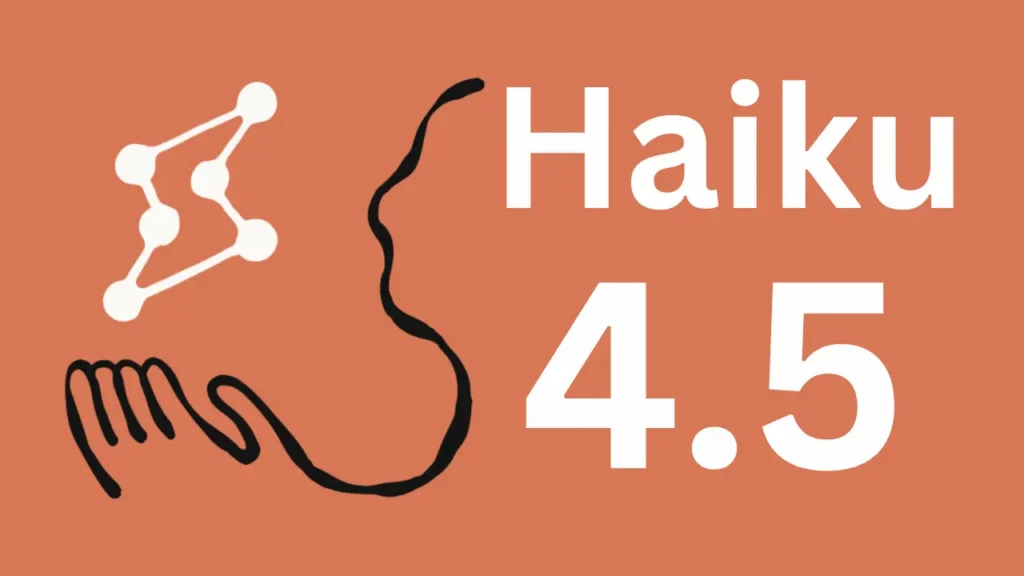Claude Haiku 4.5 — near-frontier coding power at a fraction of the cost

Anthropic this week unveiled Claude Haiku 4.5, a latency-optimized “small” member of its Claude 4 family that the company says delivers near-frontier reasoning and coding performance while running dramatically faster and cheaper than its mid- and top-tier siblings. According to Anthropic, Haiku 4.5 matches much of the practical developer performance of the company’s Sonnet model family — particularly in real-world software engineering tasks — while costing roughly one-third as much per token and producing outputs at more than twice the speed of Sonnet 4.
What is Claude Haiku 4.5?
Claude Haiku 4.5 is Anthropic’s newest iteration of the Haiku line: the “small, fast” tier in the Claude family that prioritizes low latency and low cost while supporting many advanced features previously reserved for larger models. According to Anthropic, Haiku 4.5 is a hybrid-reasoning model that adds capabilities to the Haiku class that were previously limited to Sonnet and Opus: extended thinking (deeper multi-step reasoning at configurable depth), improved computer-use and tool orchestration, image + text multimodal inputs, and explicit context-awareness for very long contexts.
Two technical highlights frequently cited are the context window and the model’s multi-mode behavior:
- Context window: Haiku 4.5 supports a standard 200,000-token context window (with a larger 1-million-token context available in developer / platform beta scenarios), meaning it can accept very large documents, long codebases, or extended conversation histories in a single request.
- Modes: near-instant vs. extended thinking: Haiku 4.5 supports two operating modes — a near-instant mode for short, low-latency answers and an extended thinking mode that lets the model perform layered or iterative reasoning and tool calls. This hybrid setup is designed so developers can trade off speed and depth per request.
Key features at a glance
- Performance class: Positioned to deliver Sonnet 4-level coding, reasoning and tool-use performance for many real-world tasks. Anthropic presents Haiku 4.5 as “matching Sonnet 4” on key developer and coding metrics.
- Context length: 200k tokens standard; 1M token context available in select developer/platform tiers — enabling single-request analysis of very large codebases or documents. ([docs.claude.com][3])
- Multimodal: Text and images supported (subject to platform limitations). ([docs.claude.com][3])
- Extended thinking & tool use: Supports layered reasoning, tool orchestration (e.g., code execution, web calls, retrieval), and improved computer-use benchmarks.
- Speed: Anthropic says Haiku 4.5 is “more than twice as fast” as the mid-tier Sonnet 4 for many workloads — a claim grounded in internal latency measurements aimed at real-time interactions (e.g., Copilot, chat assistants).
- Safety profile: Ship-ready guardrails and safety evaluations documented in the system card; Anthropic emphasizes reduced misbehavior versus earlier Haiku versions.
Price: designed for scale
One of the most widely-reported selling points for Haiku 4.5 is price. Anthropic’s public pricing lists Haiku 4.5 at:
- $1 per million input tokens (MTok)
- $5 per million output tokens (MTok)
By contrast, Anthropic’s Sonnet 4.5 (the premium mid-tier) is priced at $3 / $15 per million (input / output) in Anthropic’s published pricing, and Opus (top tier) sits significantly higher. The company also cites operational savings via techniques such as prompt caching and message batching. That price delta — Haiku roughly 1/3 the cost of Sonnet and a fraction of Opus — is the central economic argument encouraging large deployments that earlier would have been prohibitively expensive.
What this means for developers and enterprises
- Lower latency, lower cost: Teams building interactive developer tools, customer support agents, or real-time automation can reduce infrastructure costs and improve responsiveness by moving workloads to Haiku 4.5 while retaining much of the coding quality of Sonnet 4.
- Multi-model workflows: Anthropic explicitly recommends mixed-model patterns — using Sonnet for planning/complex reasoning and orchestrating many Haiku instances to execute subtasks in parallel — enabling both quality and scale.
- Operational considerations: Customers should review the system card and perform their own evaluation on domain-specific tasks, especially for safety-sensitive or high-risk workflows where the system card notes relative weaknesses.
How to call Claude Sonnet API more cheaply?
CometAPI is a unified API platform that aggregates over 500 AI models from leading providers—such as OpenAI’s GPT series, Google’s Gemini, Anthropic’s Claude, Midjourney, Suno, and more—into a single, developer-friendly interface. By offering consistent authentication, request formatting, and response handling, CometAPI dramatically simplifies the integration of AI capabilities into your applications. Whether you’re building chatbots, image generators, music composers, or data‐driven analytics pipelines, CometAPI lets you iterate faster, control costs, and remain vendor-agnostic—all while tapping into the latest breakthroughs across the AI ecosystem.
Developers can access Claude Haiku 4.5 API through CometAPI, the latest model version is always updated with the official website. To begin, explore the model’s capabilities in the Playground and consult the API guide for detailed instructions. Before accessing, please make sure you have logged in to CometAPI and obtained the API key. CometAPI offer a price far lower than the official price to help you integrate.
Ready to Go?→ Sign up for CometAPI today !
Bottom line
Claude Haiku 4.5 represents Anthropic’s latest effort to push more capable models down the cost and latency curve — a practical move that could accelerate enterprise uptake of real-time, agentic AI features. By combining Sonnet-level coding capability with a materially lower price point and faster runtime, Haiku 4.5 aims to make near-frontier AI practical at scale for businesses that were previously priced out of frequent or latency-sensitive deployments.
